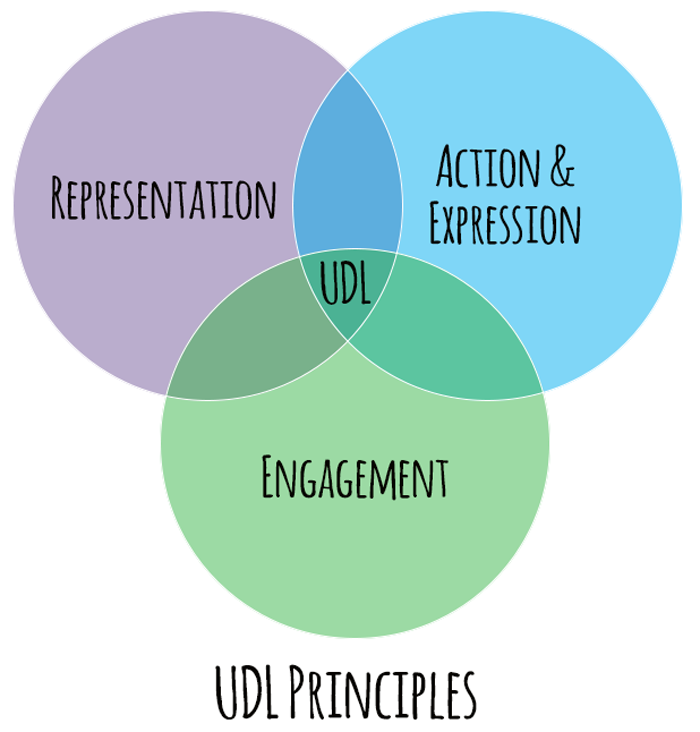
Making sure a classroom is inclusive to diverse learners is the responsibility of teachers at all levels of education. When reading this week’s content it was reassuring that the idea of learners being “typical” or “atypical” is falling out of favour. After having some experiences in an elementary classroom I can completely agree that every student has an individual approach to each subject and while some may be similar there are never two students exactly alike. The inclusion of the graphic with all differently coloured dots was a clear indication of a diverse set of learners in any given classroom. In my learning pod for EDCI 335, we are creating a learning resource for grade three math. While creating this resource we have been trying to think of different situations where we can plan for an inclusive classroom environment. The idea of having to create lessons that are inclusive for many different types/styles of learners can seem intimidating at first. However, the UDL guidelines are a valuable resource in recognizing how lessons can be created and that these changes will benefit multiple learners with IEP’s and the class as a whole.
This video on Universal Design for Learning is a good outline of what it is and how teachers can use the principles in their classrooms.
“Universal Design for Learning, a framework to improve and optimize teaching and learning for all people”
– CAST, 2018. Retrieved from http://udlguidelines.cast.org
For my learning pod’s interactive learning resource we decided to incorporate the context of a learner being absent for an extended period of time. This context focused on a one or two-week absence but this week’s content made me reflect on how this context would be useful to other learners in the same class. Growing up I had a friend with severe insomnia that caused them to miss part of the school day or arrive sleep-deprived and unreceptive to lessons. Perhaps teachers could include this type of learner the same way they would include a learner being absent for an extended period of time. This would likely create some extra prep for the teacher but if the resources were digital/reusable I think it would be time well spent. When reading the content for Universal Design there was a section that outlines a class that has a new learner with hearing loss. It goes on to speak to how the inclusion methods for that student also helped other students in the class. I instantly thought about the learning resource me and my pod are creating and how the pace of the lesson or learners becoming distracted in class would also benefit from adjustment made for a learner being absent for an extended period of time. The digital and/or take-home version of the lesson would be useful in more contexts than was originally evident.
References
CAST (2018). Universal Design for Learning Guidelines version 2.2. Retrieved from http://udlguidelines.cast.org
CSA education. (2020, August 31). Universal Design for Learning. https://csaedu.com/communications/universal-design-for-learning/
Teachings in Education. (2019, December 18). Universal design for learning: UDL [Video]. YouTube. https://www.youtube.com/watch?v=gmGgplQkrVw
University of Victoria Educational Technology. (2021, May 5). Universal Design. https://edtechuvic.ca/edci335/universal-design/